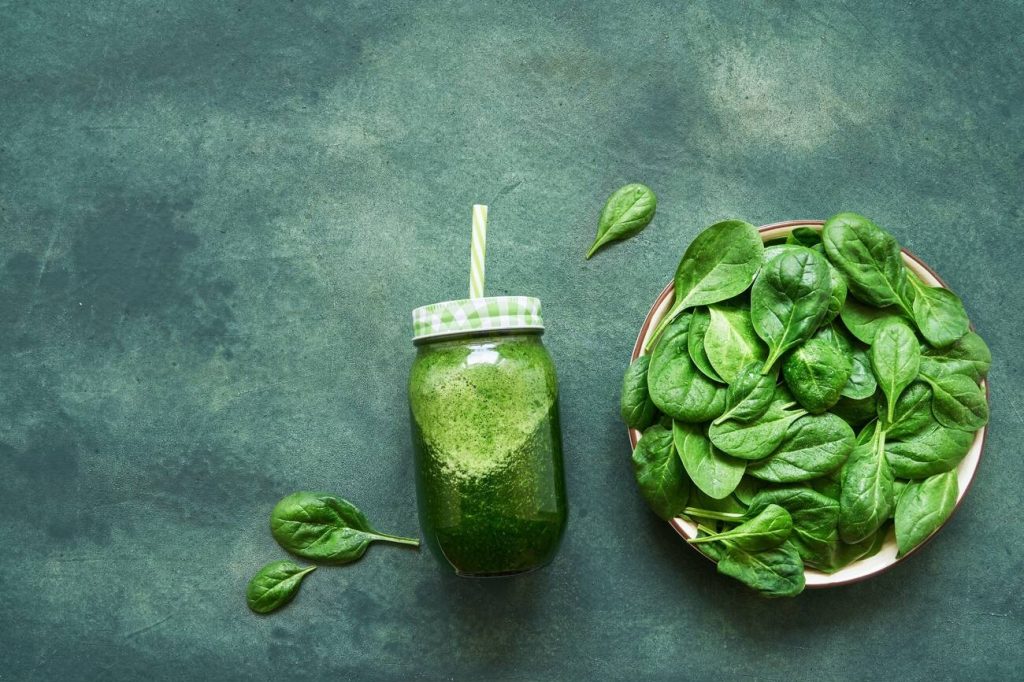While it does contain higher levels of iron compared to other vegetables, only a small fraction of that iron is actually absorbed by your body. In fact, recent studies suggest that certain compounds in spinach can even hinder iron absorption. However, don’t write off spinach completely! It still offers numerous nutritional benefits and can be part of a balanced diet to meet your daily iron needs.
The Origin of Spinach Anemia
The myth of spinach as a good source of iron originated from an overestimation of its iron content in the early 1900s. Back then, researchers mistakenly believed that spinach had ten times more iron than it actually does. This misconception led to the widespread belief that spinach could prevent and treat anemia. However, further research revealed that while spinach does contain iron, it is in the form of non-haem iron, which is not easily absorbed by the body. As a result, the amount of iron actually absorbed from spinach is much lower than previously thought. Despite this discovery, the myth persists today, leading many people to believe that spinach alone can provide sufficient amounts of iron for optimal health.
Understanding the Different Forms of Iron
Non-haem iron, found in vegetables, is less easily absorbed by the body compared to haem iron from meat. Understanding the different forms of iron is crucial when it comes to meeting your nutritional needs. The impact of cooking on iron absorption is an important factor to consider. While cooking can increase the availability of non-haem iron, it can also lead to some loss of this essential nutrient. Incorporating vitamin C-rich foods into your meals can enhance iron absorption from plant-based sources. When comparing the iron content of different leafy greens, spinach stands out as a good source. However, it’s important to address common misconceptions about spinach being a superior source of iron due to its high oxalic acid content. Iron supplementation may be necessary for individuals at risk of deficiency or those with increased needs, but it should always be done under medical supervision and guidance.
Factors Affecting Iron Absorption in Spinach
Factors like polyphenolic compounds in spinach can reduce the absorption of non-haem iron. Non-haem iron is the form of iron found in plant sources, including spinach. When you consume spinach, these polyphenolic compounds bind to the iron and form insoluble compounds, making it harder for your body to absorb the iron effectively. However, there are ways to enhance iron absorption from plant sources like spinach. One important factor is consuming foods high in vitamin C along with your spinach. Vitamin C helps to increase the absorption of non-haem iron in your body. Additionally, cooking methods can also impact the availability of iron in spinach. For example, boiling or steaming spinach can help break down some of these compounds and increase its overall iron content that your body can absorb.
The Nutritional Benefits of Spinach
Including spinach in your diet can provide numerous nutritional benefits, such as being a good source of vitamins and minerals. Spinach is not only great for eye health, but it also supports a healthy immune system. If you’re looking to manage your weight, spinach is a low-calorie food that can help you reach your goals. Additionally, spinach contains vitamin K, which plays a crucial role in blood clotting and bone health. It’s also rich in folate, an essential nutrient for cell growth and development. So whether you want to support your vision, boost your immune system, maintain a healthy weight, promote blood clotting and bone health or ensure proper cell growth and development, adding spinach to your diet is a smart choice!
The ‘Spinach Teeth’ Effect
To minimize the ‘spinach teeth’ effect, remember to practice proper dental hygiene after consuming leafy greens like spinach. This effect occurs when oxalic acid in spinach reacts with calcium ions in saliva and spinach to form calcium oxalate. The insoluble calcium oxalate coats the teeth, causing a chalky sensation and tooth staining. To prevent this, it’s important to maintain good oral health care practices. Brushing your teeth for two minutes, twice a day, using fluoride toothpaste can help remove any residue left by spinach. Additionally, flossing daily can remove any particles trapped between your teeth. Regular visits to your dentist for cleanings can also aid in minimizing the chalky sensation caused by spinach consumption. By following these dental hygiene practices, you can enjoy the nutritional benefits of spinach without worrying about the ‘spinach teeth’ effect.
| Dental Hygiene Practices |
|---|
| Brush your teeth twice a day |
| Floss daily |
| Visit your dentist regularly |
The Importance of Iron and Iron Deficiency
Now that you understand the ‘spinach teeth’ effect, let’s discuss the importance of iron and iron deficiency. Iron plays a critical role in your body, especially when it comes to transporting oxygen. If you have insufficient iron levels, you may experience symptoms of anemia such as fatigue and dizziness.
To combat iron deficiency, it is important to incorporate an iron-rich diet into your daily routine. Nonpregnant women aged 19-50 need 18 mg of iron per day, while men aged 19 and older need 8 mg. Pregnant women require 27 mg per day.
If dietary changes alone are not enough, there are also iron supplementation options available. However, keep in mind that not all forms of iron are easily absorbed by the body. Factors such as heme vs non-heme iron and other compounds present in food can impact absorption rates.
To ensure adequate absorption of iron from plant-based sources like spinach and legumes, consume them with foods high in vitamin C. This will enhance the absorption process.
Recommended Daily Iron Intake
It’s important to know the recommended daily iron intake for different age groups and genders. Iron plays a critical role in the body, including transporting oxygen. Not getting enough iron can lead to symptoms like fatigue and dizziness. The table below shows the recommended daily iron intake for different age groups:
| Age Group | Recommended Daily Iron Intake |
|---|---|
| Nonpregnant women 19-50 | 18 mg |
| Pregnant women | 27 mg |
| Women 51 and older | 8 mg |
| Men 19 and older | 8 mg |
| Infants and children | 7-15 mg |
To prevent iron deficiency, it’s important to consume iron-rich foods like shellfish, spinach, liver, legumes, red meat, pumpkin seeds, quinoa, and dark chocolate. Factors that can affect iron absorption include consuming heme vs. non-heme iron sources and incorporating vitamin C-rich foods in your diet. If you’re unable to meet your daily iron needs through food alone or have specific health conditions that require additional supplementation, consult with a healthcare professional for appropriate iron supplementation guidelines.
Avoiding Excessive Iron Intake
Consuming excessive amounts of iron can be harmful to your health, so it’s important to be mindful of your intake. Iron toxicity can occur if you exceed the recommended daily intake. While iron is essential for your body, too much of it can lead to adverse effects. It’s best to avoid exceeding the upper limit for iron consumption, especially through supplements. Instead, focus on incorporating iron-rich foods into your diet. There are plenty of delicious recipes that can help you meet your iron needs without going overboard. Additionally, be aware of iron absorption inhibitors, such as tea and coffee, which can hinder the absorption of this vital mineral. Lastly, include iron-rich fruits like strawberries and watermelon in your meals for a balanced approach to meeting your nutritional requirements.
Heme Vs. Non-Heme Iron
To maximize your iron absorption, include both heme and non-heme iron sources in your diet. Heme iron, found in animal sources like meat and seafood, is easily absorbed by the body. Non-heme iron, found in plant-based foods like spinach and beans, is less easily absorbed. However, there are factors that can enhance the absorption of non-heme iron such as consuming it with vitamin C-rich foods. Iron deficiency can lead to symptoms like fatigue and dizziness, so it’s important to ensure you’re getting enough iron in your diet. You can incorporate iron-rich foods into your meals by trying recipes that include spinach or legumes, or choosing fortified cereals. Remember to consult with a healthcare professional for personalized advice on meeting your daily iron needs.
Animal and Plant-Based Sources of Iron
Include a variety of animal and plant-based sources of iron in your diet to ensure you’re meeting your daily iron needs. Here are some options for incorporating iron-rich foods into your meals:
- Seafood: Enjoy shellfish like clams, oysters, and mussels, which are high in heme iron that is easily absorbed by the body. They also provide protein, vitamin C, and vitamin B12.
- Iron-rich recipes: Try cooking with organ meats such as liver or heart, which are packed with iron and other nutrients like B vitamins and copper. Beef liver is an excellent source of vitamin A.
- Plant-based sources: Include legumes like beans, lentils, chickpeas, peas, and soybeans in your meals for a nutrient-rich boost. These legumes provide a good amount of iron along with folate, magnesium, and potassium.
- Iron-fortified foods: Consider adding fortified cereals or raisin bran to your breakfast routine for an easy way to increase your iron intake. These fortified cereals also offer fiber for added benefits.
Incorporating these foods will not only help meet your iron needs but also provide essential nutrients for overall health.

